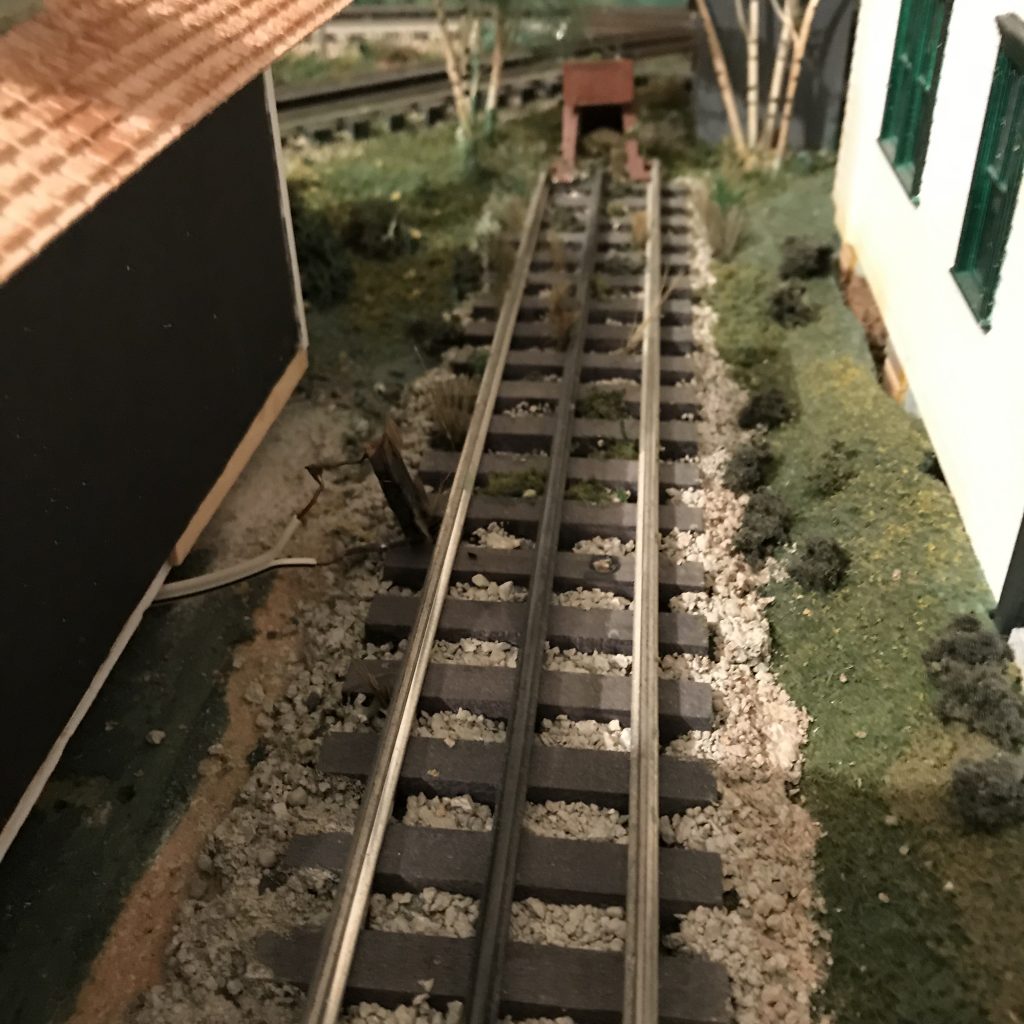Spur sidings are rarely used or maintained to the degree that main trackage and passage sidings are maintained. Spur sidings might be privately owned and not served by the railway’s maintenance-of-way equipment. It’s not uncommon for a spur siding to have weeds growing within the ballast

Time and Difficulty
This is a simple project that can be done in just a short time, but really adds detail to your layout. It is a very easy way to improve the realism and short siding can be completed in less than an hour.
What You’ll Need
- tacky glue
- white or carpenter’s glue.
- scissors
- commercial grass Fiber or a wide natural fiber paint brush
- small chunks of ground foam in grass color
- finely ground foam in assorted grass colors
This is my own technique. There may be other techniques that are just as good or even better, but this will get you started. First, squirt a glob of tacky glue about half the diameter of a dime, wherever you want the grass to grow the tallest. That is typically next to the cross ties, rails, bridge abutments, tunnel buttresses, discarded lumber, ledge rocks, coal heaps, equipment boxes, fence posts, etc.; places where mowers don’t reach and people and animals don’t tread. Pinch the long grass fibers or paint brush bristles between your finger and thumb, and cut to about one inch length. Without letting go, work one end of the fibers down into the glue with a tight, circular motion making sure the outside edges are covered. Hold it until the fibers will stand up on their own. Repeat until you are satisfied with the coverage and density of the tall grass.

Continue by gluing small clumps of grass-colored foam between the ties, especially on the ends.
The weedy siding will have a more convincing appearance, especially if the weeds are growing around discarded equipment.
